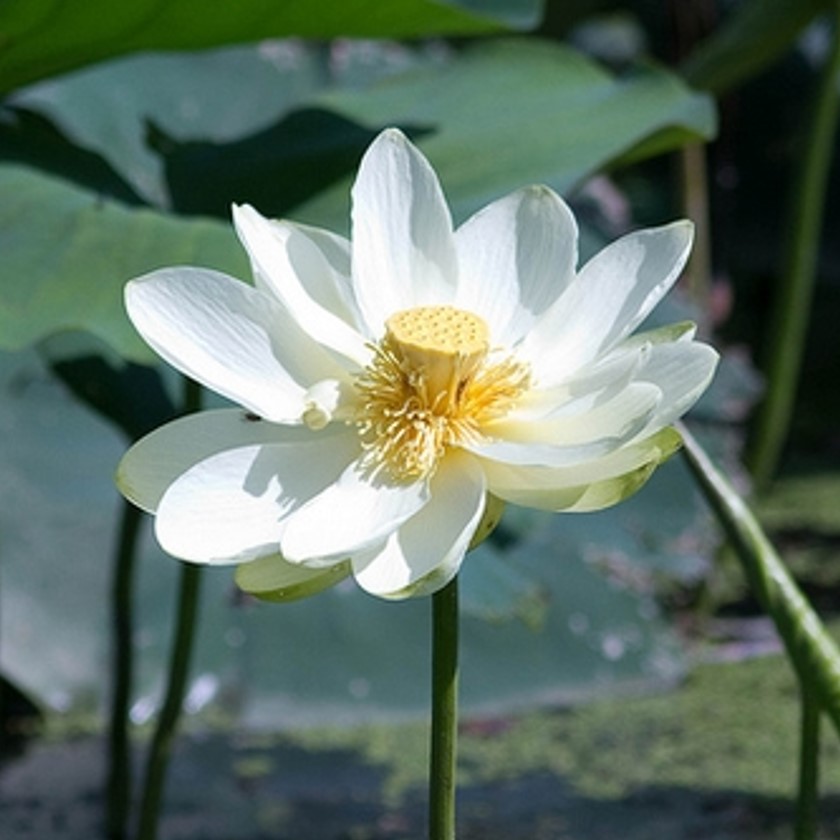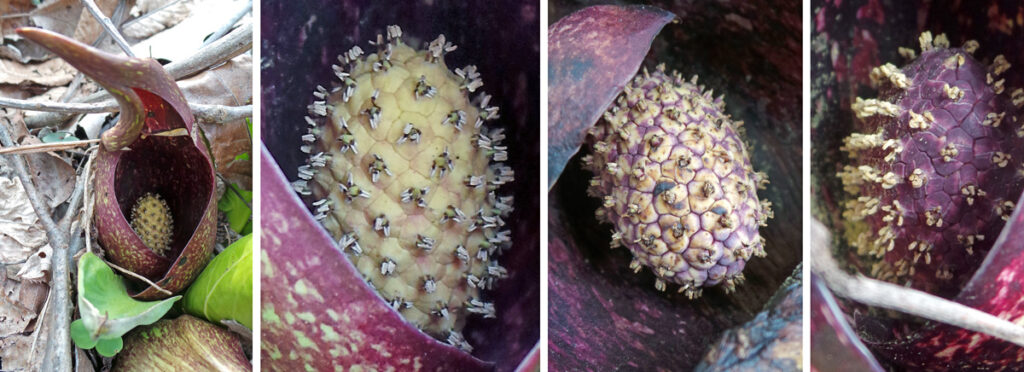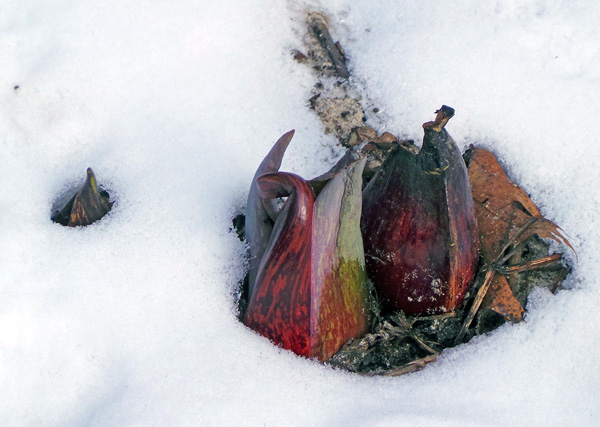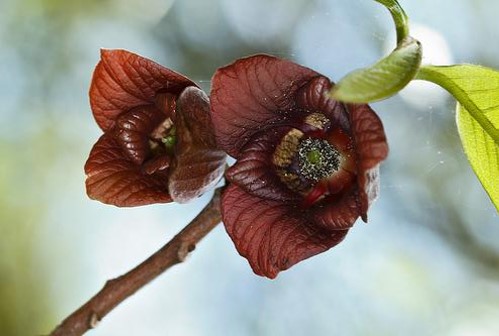By Robert Carter reporting for Native Plant News Summer 2024
We humans try to make nature so simple. When it comes to generating heat, organisms are either cold-blooded (ectotherms) or warm-blooded (endotherms). Thermogenesis, the process of heat production in organisms, occurs in all warm-blooded animals and also in a few species of thermogenic plants. For those who like to learn big impressive words, ectotherms are also called “poikilotherms” and endotherms can be called “homeotherms.” Animals are either ectotherms or endotherms, but a few animals, such as bears and bats, can switch between ectotherm and endotherm. They are heat-controlling organisms called heterotherms.
Humans like to put all plants into the ectotherm category because plants are not capable of producing internal heat. However, there are rule-breaking plants that take that energy captured from the sun and produce heat. They do not do this all year, but, during the mating season they can turn on the heat. The heat created is typically used to cause a pollinator-attracting odor to spread through the air. In the process, the pollinator sometimes finds a warm place to spend cool spring nights. Plants such as Skunk Cabbage, pawpaw, lotus, and some magnolias could be called the electric blankets of plants. They do not need electricity; they just need an accumulation of mitochondria They do not need electricity; they just need an accumulation of mitochondria in the reproductive flower. Mitochondria are structures in the cells of plants and animals that help convert sugar into energy. Mitochondria are often called the powerhouse of the cell. Large accumulations of mitochondria in the flowers help some plants create heat by breaking down sugar (glucose) to release energy during the process of cellular respiration.

American Lotus (Nelumbo lutea) and Common Pawpaw (Asimina triloba) are ancient species that are primarily pollinated by beetles. They evolved flowers before bees were common. The flowers produce heat to volatilize odors to attract the beetles. In American Lotus, the flowers close at sunset and the beetles in the flower receive heat during the night. Think about that. The plant provides the animal with room and board. Not only do the beetles get a cozy place to spend the night, they get a meal in the form of pollen. The flowers also change sex during the process. They begin as females and then transition to males. Common Pawpaw also are pollinated by beetles and change sexes. The heat-producing flowers do not close, but the petals curve over the flower center creating pollination chambers for the beetles to reside while they dine.

The strangest heat-producing rule breaker in the Carolinas is the Skunk Cabbage (Symplocarpus foetidus). It is a wetland-preferring boreal species with a range that terminates in the mountains of North Carolina. It is in the Arum family and has a leafy structure called a spathe that surrounds a spadix. A spadix is a fleshy stem that supports the flowers. An example of a spadix and spathe is the flower of the Jack-in-the-pulpit.

Skunk Cabbage begins to grow in late winter or early spring, often while snow is on the ground. The flower structures emerge first and can push through snow and ice. People must shovel or sprinkle salt to clear snow, but the Skunk Cabbage melts the snow with heat produced by the spadix. The heat is only produced by the female flowers, which are produced first. The heat prevents the flower from freezing but it also volatilizes the putrid odor which gives the plant its name. The odor attracts flies and gnats, which are the primary pollinators. The heat is due to the increased number of mitochondria in the spadix. The spadix produces the heat and the spathe serves as a leafy blanket. When the male flowers are produced, the thermogenesis declines, but the female flowers have already been fertilized. The spadix can keep the temperatures inside the spathe up to 20 degrees F warmer than the surrounding environment. This is almost like a flowering small mammal. If you are ever on a cool early spring hike and get a little chilly, consider snuggling up to a Skunk Cabbage or magnolia flower. Then you can be a rule-breaking plant hugger.

Robert Carter grew up exploring the Piedmont of South Carolina. He attended Clemson University (BS, MS) and Auburn University (PhD) to obtain degrees in forestry. His graduate research involved identifying landscape ecosystems using plants, soils, and landform in the mountains of North Carolina and the longleaf pine ecosystems of lower Alabama. After a career in academia, he moved back to South Carolina where he is the Outdoor Education Specialist with the Catawba Indian Nation.

